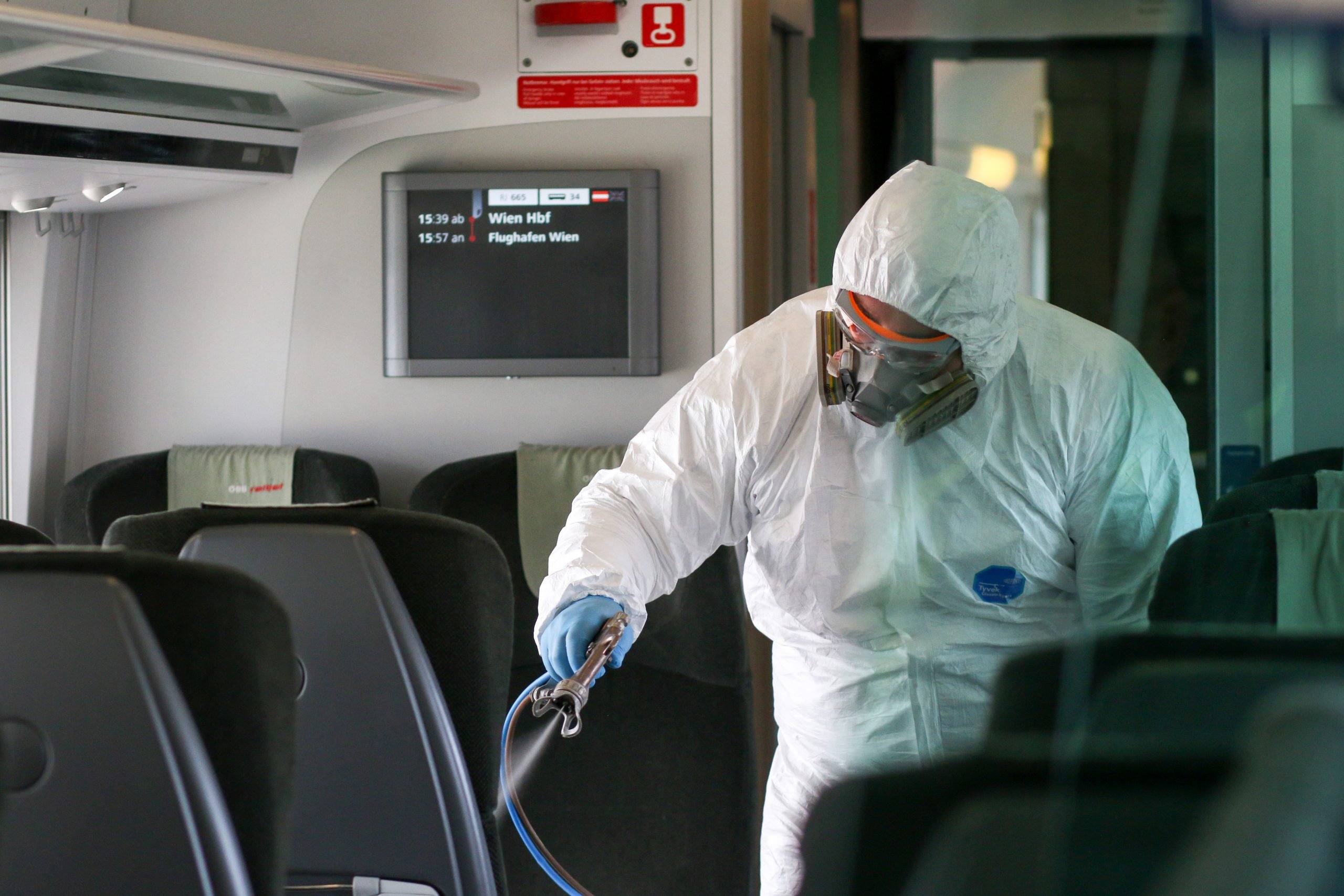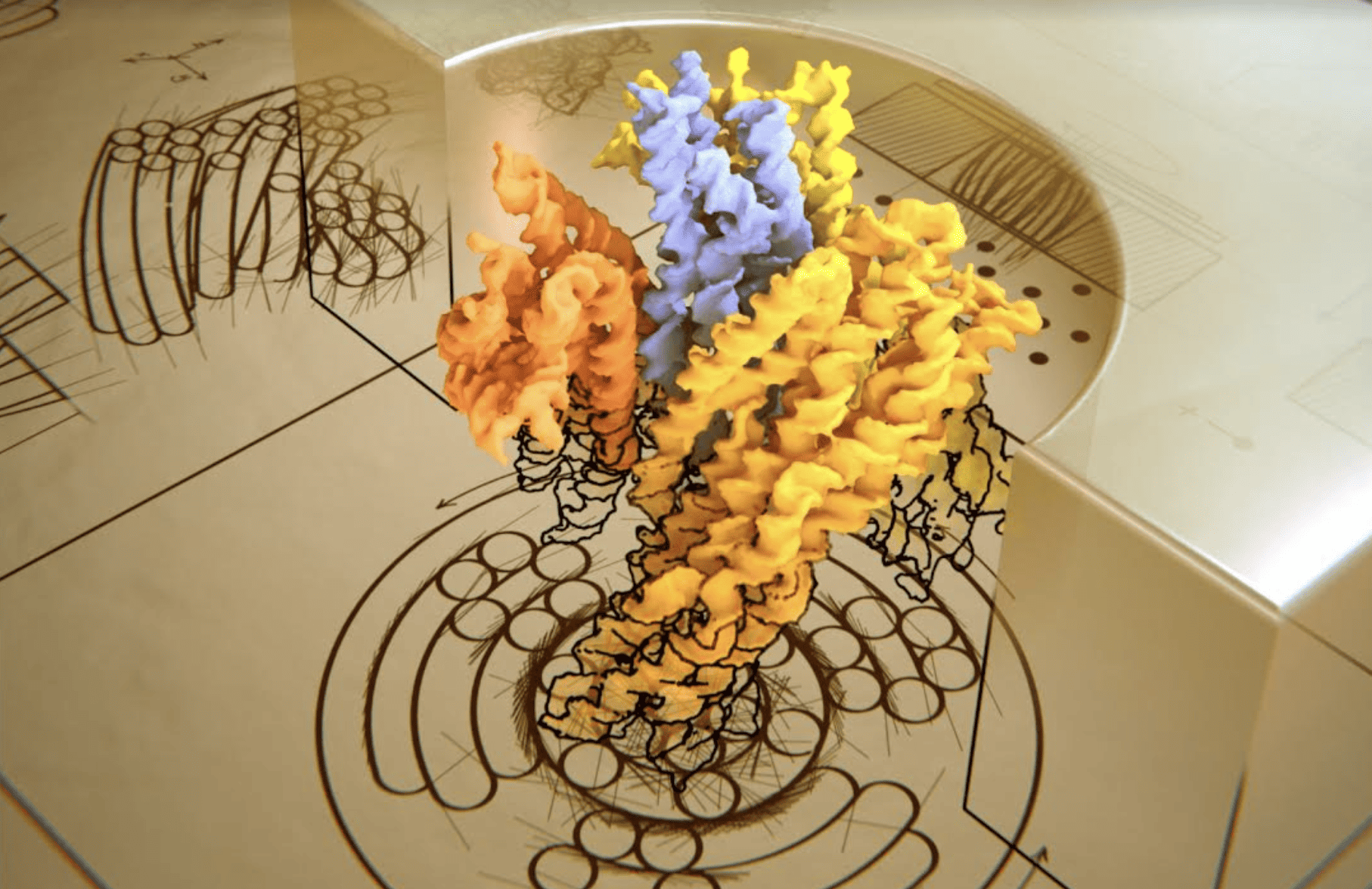
2020 will be a very good year for Resysten. This Hungarian start-up sells only one product – a protective coating. It has been gaining customers for 6 years now. Last year it covered 30,000 m2 with its Sanmed protective coatings. So far this year, it took just 1 1/2 months to reach 30,000 m2. Plus, the company expects its revenues to be three or maybe even four times higher this year as well.
Why is it that when economies are brought to a halt and all anyone ever talks about is the crisis in question, a small Hungarian start-up is able to increase its revenues by a factor of four? The answer is simple – the protective coating invented by Resysten kills coronavirus. It also kills other viruses, as well as bacteria and fungi, and prevents them from reproducing on a surface. It can be applied to any surface, it doesn’t matter if it is metal, fabric, or wood. And it retains its protective properties for an entire year. The coating is harmless to the environment and people, and all you need is light to make it work.
Photocatalytic coating kills coronavirus
“Our coating contains several metal oxides, mainly titanium-dioxides. When light reaches the surface, titanium dioxide works as a catalyst for some processes that take place in the thin layer of the air surrounding the surface. Free radicals are then generated, which leads to hydrogen peroxide forming on the surface and surrounding it so that this very thin layer becomes unlivable for microorganisms. Simply speaking, these free radicals from the oxides destroy the bacteria and other microbes, so that they can’t live on the surface anymore,” explains Peter Lehoczky, CEO of Resysten.
Originally the coating was to be used mainly in the healthcare and transport sectors, but the coronavirus pandemic has revealed new areas where it can be of use. “Generally speaking, before the coronavirus, we were working on lots of projects within public transport. Since COVID-19 broke out, other sectors have shown interest too, like offices and open spaces. We have ongoing projects in offices, including for the Hungarian Telecom, in shops and in courthouses, pretty much everywhere,” Peter Lehoczky tells us.
The antiviral material has saved the Polish company Sanwil, which makes protective coatings for materials. Its products are used in the production of furniture – from soft sofas to dental chairs, car seats, shoes, and even specialist clothing, e.g. for firefighters. But as the economies of countries closed down one by one, orders dropped almost to zero. “If we did not manage to enter the market with Sanmed, things would have turned out badly,” admits Witold Śliwa, export and automotive director of the company.
Antiviral hazmat suits
The company invented Sanmed several years ago. The material is made of polyester-knitted fabrics with a polyurethane outer layer. The protective polyester layer offers bona fide strength against rips, tears, and punctures and means that the material can be sewn or even fused together. Polyurethane has properties that function as a barrier. No virus or bacteria can penetrate the specially designed pores. Additionally, some variants of Sanmed have been enriched with silver zeolite, which kills any microorganisms that touch it. “The material is very thin, soft, and flexible. It is waterproof and breathable. Plus, it’s easy to clean, can be disinfected and washed at 95 degrees Celcius (203 degrees Fahrenheit), and does not lose its properties after washing. We have a certificate from the Belgian Centexbel Institute that our material has obtained the highest level – the 6th class – of viral resistance,” Śliwa adds.
 Sanmed has been used for sewn hospital mattress covers in the past. But furniture companies stopped doing that this year. However, consumers went looking for textiles suitable for protective clothing (PPE). So, the company started to sell antiviral Sanmed as a material for hazmat suits. At first, it sent several batches of textiles for free to hazmat suit manufacturers. Customers quickly started to line up. “Now 80% of our production revolves around Sanmed. Every week there are new customers who order bigger and bigger batches. Although 4 out of 5 industries that we serve are still not up and running again quite yet, we can still stick to the planned budget thanks to our production of Sanmed,” Witold Śliwa explains.
Sanmed has been used for sewn hospital mattress covers in the past. But furniture companies stopped doing that this year. However, consumers went looking for textiles suitable for protective clothing (PPE). So, the company started to sell antiviral Sanmed as a material for hazmat suits. At first, it sent several batches of textiles for free to hazmat suit manufacturers. Customers quickly started to line up. “Now 80% of our production revolves around Sanmed. Every week there are new customers who order bigger and bigger batches. Although 4 out of 5 industries that we serve are still not up and running again quite yet, we can still stick to the planned budget thanks to our production of Sanmed,” Witold Śliwa explains.
More examples like that of Resysten or Sanwil can be found across the whole of Europe. Since the coronavirus pandemic started, clients, businesses, and scientists have become more and more interested in antiviral products. Obviously, initially, there was always a lot of demand for antiviral personal protective equipment (PPE), mainly masks, head coverings, and neck protectors. “We have seen a huge increase in demand for PPE. In comparison, we sold about 700,000 masks during all of 2019. And this January, in just four days, we saw demand for 8.5 million items,” says Jana Zimová, from Respilon, a Czech manufacturer of nanofiber products with copper oxide.
But scientists and companies are also working on developing antiviral versions of ordinary products that are not protective in origin. For example, researchers from the Technical University in Szczecin (Poland), who had developed antibacterial paint for painting walls, are now working to modify the composition so that the paints also have an antiviral effect. Albini Group, an Italian shirt fabric manufacturer, recently introduced Viroformula, a new type of fabric with silver compounds that protects against viruses and bacteria.
Science benefits from coronavirus
Another side-effect of the coronavirus is the boom in nanotechnology. Nanotechnology entails, in the simplest of terms, modifying materials at the level of single atoms and molecules. It is these kinds of techniques that make it possible to add copper, silver, and/or titanium compounds, or other elements to various materials and thereby furnish the final products with antiviral properties. “The pandemic is bad for the economy but it is a huge boost for nanotechnology,” says Jiří Kůs, chair of the Czech Nanotechnology Industries Association. “Before COVID, I had so many meetings with investors and it was very difficult to get them interested in nanotechnology. In March, when the boom for nanofibre masks had taken off, investors started to call me and ask if I can tell them more about various nano projects and companies that they might want to invest in,” he goes on to say.
Since the beginning of the pandemic, Jiří Kůs estimates that the production of nanofibers has tripled just in the Czech Republic. What will happen once the pandemic is over? Jiří Kůs is hopeful, the future belongs to advanced materials, he says. Companies share his optimism. “Since people are sensible and understand the importance of being able to touch things, we are sure that we’ll be able to get back on track with what we started,” Peter Lehoczky states.




